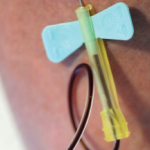Researchers working to decode the epigenetic landscape for rheumatoid arthritis (RA) were surprised to discover a connection to Huntington’s disease, a finding that could pave the way to discoveries of new therapeutic targets. By developing new methods to integrate data from epigenetic technologies, scientists at the University of California, San Diego (UCSD), set out to…




